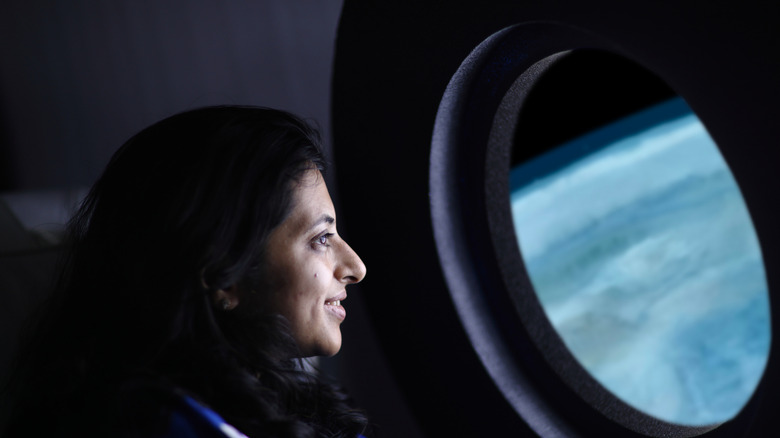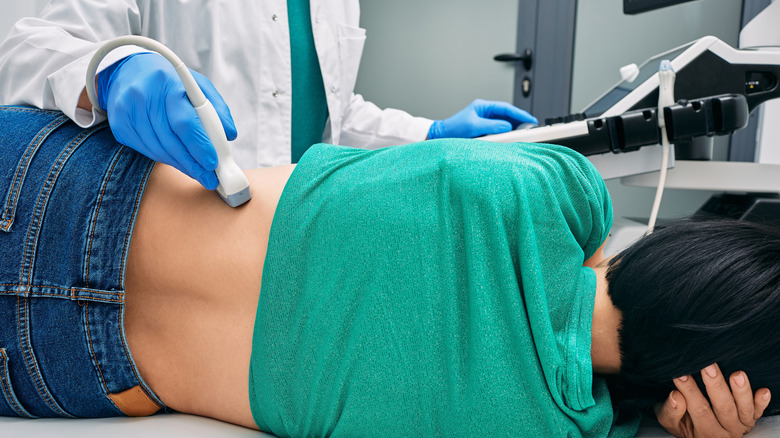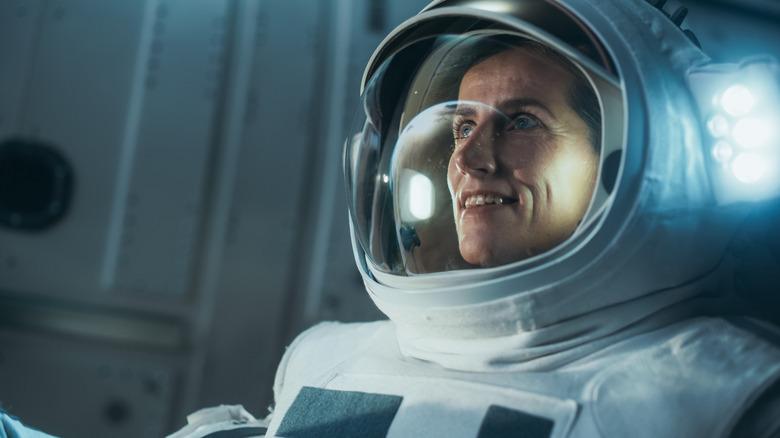How A Common Organ Problem Could Crush The Dream Of Reaching Mars
When NASA astronauts Suni Williams and Butch Wilmore returned to Earth in March of 2025 after being unexpectedly stranded on the International Space Station for nine months, it highlighted for many people just how much of an effect that space travel can have on the human body. The first thing that many observed upon the astronauts' return was the obvious change in their appearance, especially for Williams, who had grayer hair and what some said was a noticeably more pronounced chin. However, spending time away from Earth's surface for long periods can also have other effects, such as bone and muscle loss, immune dysfunction, vision impairment, and even alterations in the structure of the brain. And, according to physiologist Rachael Seidler of the University of Florida in Gainesville, "The longer someone has been in space, the larger the magnitude of change" (via ScienceNews).
These effects, along with others, have significant implications for those like Elon Musk, who have ambitions of sending humans to Mars and beyond. In fact, scientists say one serious limitation on these dreams may be the potential for kidney damage during the amount of time it would take to complete the two-year voyage to Mars and back.
How space travel can cause kidney damage
A 2024 study published in Nature explored how space travel affects kidney health, especially during extended missions ranging beyond the Earth's protective magnetic field. The researchers collected data from both real and simulated space conditions, including the effects of weightlessness as well as cosmic radiation.
The authors explained that first of all, spaceflight affects how the kidneys function, leading to more calcium in the urine, which can increase astronauts' risk for kidney stones (here's what you can do to decrease your risk of kidney stones). They noted that certain changes in kidney structure occur in response to being in space. Also, cosmic radiation exposure equivalent to what would be experienced during a trip to Mars could lead to kidney damage, including blood vessel injury and impaired kidney function. Still, more research is needed so that we can develop treatments to protect the kidney health of astronauts if deep space missions are to become a reality.
Delving deeper into 'cosmic kidney disease'
A 2024 literature review in Clinical Kidney Journal delved more into the condition, which the authors referred to as "cosmic kidney disease." They explained that it was previously believed that astronauts developed kidney stones because bones lose calcium when people are in space, which then exits the body in the urine.
However, it has now been shown that space exerts direct effects on the kidneys as well as the gut bacteria that can cause kidney stones. They noted that certain kidney proteins become less active, leading to more calcium and oxalate being excreted. Additionally, more bacteria grow in the gut that can affect oxalate levels. On top of this, spaceflight causes the body to retain more water, causing urine to become concentrated. These factors working together can cause kidney stones. The authors added that having a kidney stone attack in space could be dangerous and difficult to treat.
How cosmic radiation affects the kidneys
Radiation — especially the type astronauts encounter during deep space missions, called Galactic Cosmic Radiation (GCR) — can harm the kidneys in several ways, according to the authors of the Nature study. The kidneys are vital organs that filter waste from the blood and help regulate important things like blood pressure and electrolyte balance. They are especially sensitive to radiation, even at low doses similar to what might be experienced on a Mars mission.
GCR includes high-energy particles that can damage the mitochondria, which are tiny structures inside kidney cells responsible for producing energy. Because the kidney's proximal tubules rely heavily on these mitochondria, damage here can impair the kidney's ability to function properly. This damage can lead to cell death and loss of kidney function over time.
Additionally, radiation causes injury to the small blood vessels within the kidneys, leading to inflammation and vascular damage. This can result in conditions such as thrombotic microangiopathy, where blood clots form in these small vessels, further impairing kidney function.
The implications of chronic kidney injury
Over time, these radiation-induced injuries may cause chronic kidney disease (CKD), fibrosis (scarring), and reduced ability to filter blood efficiently. While some damage may take months or years to fully develop, signs of kidney injury can appear relatively early after radiation exposure, according to the authors of the Nature study.
CKD, also known as kidney failure, occurs when the kidneys become unable to filter out waste and excess fluid from the blood. When the kidneys fail, dangerous amounts of these substances can build up. While CKD can be slowed by removing the cause, this may not be enough to keep it from progressing. When kidney failure becomes severe enough, the individual must either undergo dialysis to filter the blood or receive a kidney transplant. (Read why dialysis might not be the right choice for everyone with late-stage kidney disease.)
Warning signs from the kidneys may include nausea, vomiting, loss of appetite, fatigue, sleep disturbances, changes in urination, muscle cramps, difficulty concentrating, swelling in the feet and ankles, dry skin, high blood pressure, shortness of breath, and chest pain.
How we might protect the kidneys during space travel
While the idea of radiation-induced kidney damage during space travel can be daunting, NASA emphasizes that they are not going to be deterred. "Some people think that radiation will keep NASA from sending people to Mars, but that's not the current situation," said Pat Troutman, NASA Human Exploration Strategic Analysis Lead. "When we add the various mitigation techniques up, we are optimistic it will lead to a successful Mars mission with a healthy crew that will live a very long and productive life after they return to Earth."
NASA is currently developing strategies to protect astronauts from GCRs during deep space missions. Researchers are testing shielding materials for spacecraft, habitats, and spacesuits while also exploring pharmaceutical countermeasures that could be more effective than shielding alone. Radiation-sensing instruments are being built into spacecraft, and astronauts use personal dosimeters aboard the space station. Engineers are advancing space weather forecasting tools and investigating faster rockets to limit the time spent in space. NASA is also creating new radiation detection and mitigation technologies.
So, while challenges remain as we prepare to send humans to Mars, scientists see this as an opportunity to pioneer new medical advances — ones that could protect astronauts in space and improve lives here on Earth.





